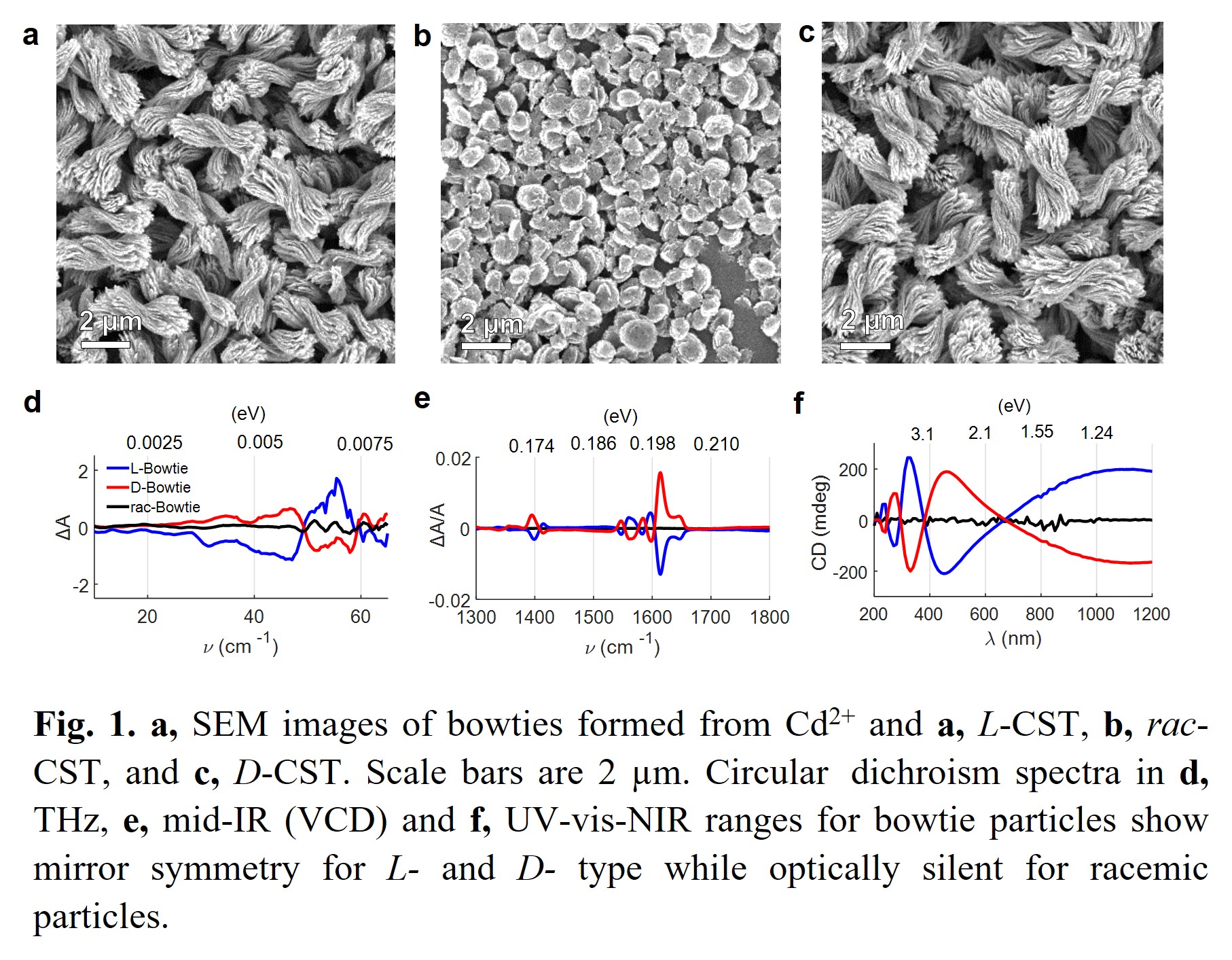Chirality in chemical disciplines is often viewed as a binary characteristic while materials science and photonic technologies require continuously variable chiral geometries and chiroptical spectra. Here we show that sub-microscale nanostructured particles can be self-assembled from anisotropic building blocks with widely variable geometry, chirality measures and optical asymmetry while retaining consistent bowtie shapes
(Fig 1a-c). The self-limited mechanism of the self-organization of anisotropic building blocks makes possible high synthetic reproducibility and computational predictability of their geometries for different concentrations of reagents, ionic components, enantiomeric compositions, media polarity and other parameters. The positive and negative chiroptical peaks observed from UV to IR parts
(Fig 1d-f) of the spectrum originate from absorptive and scattering phenomena with contribution from both dipolar and quadrupolar modes. The dependence of geometrical chirality measures and chiroptical characteristics enable the predictive synthesis of bowties with desirable polarization rotation. Controllable pitch, length, width, and thickness leads to tunable chiroptical activity across from UV to IR, which can be used to print chiroptical metasurfaces for photonic markers for machine vision devices.


